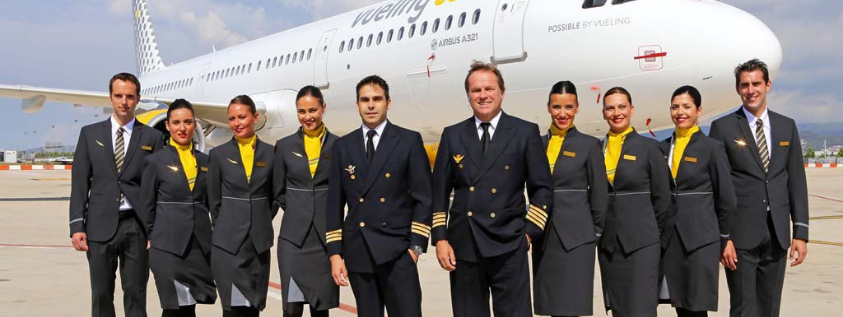Aircrew, also called flight crew, are all personnel on board an aircraft who operate the aircraft before, during and after the flight.
The composition and number of flight crew members depends on the type of aircraft, the duration of the flight and the purpose of the flight. For example, on transoceanic flights – where the maximum workload limits are greatly exceeded – crews may be doubled or even tripled, alternating on-board duties with rest periods.
Flight crew is an essential part of an airline. Depending on the task to be performed on board, we can distinguish between Technical Crew and Cabin Crew.
Technical crew
The technical crew consists of the Pilot Fly (PF), a position usually (but not necessarily) occupied by the flight commander, and the Pilot Monitoring (PM), a task that falls to the co-pilot, although, as we have said in the case of the commander, this is not always the case.
In terms of responsibilities, the Commander is the pilot who has been designated as pilot-in-command and is the highest ranking member of the flight crew. To serve as such, he or she must have accumulated a minimum of 1,500 flight hours, and pass a specific course in the company itself.
The Co-Pilot or FO is the pilot who normally sits to the right of the Commander and is in charge of monitoring and/or executing – depending on whether he/she is acting as PF or PM – all the manoeuvres required in each phase of the flight.
Finally, the Flight Engineer (FE). This is a position that does not currently exist within the Technical Crew of most multi-crew aircraft, although it is still possible to find it in cargo aircraft operating in less developed countries. Years ago, in aircraft manufactured between the late 1920s and the 1970s, the flight engineer was the crew member responsible for the aircraft’s engines, systems and fuel management.
As aircraft evolved, and technology allowed many aircraft systems to be automated, the role of the Flight Engineer was phased out. It was taken over by ECAM devices, which provide detailed information to the crew on the aircraft’s engine parameters, fuel consumption, hydraulics and electrical systems with high accuracy, through multi-function EFIS displays. At Iberia, the last aircraft to have an on-board mechanic were the Boeing 727s, which were withdrawn from active service in October 2001.
Cabin Crew
The Cabin Crew, also known as Cabin Crew or Cabincrew, is composed of a purser and several Flight Attendants. The regulations state that there must be one cabin crew member for every 50 passengers on board. So, in an A320, whose most common capacity is 200 people, there will be four cabin crew members; one purser and three flight attendants.
The cabin crew, although better known for their work in terms of company image and passenger service on board, play a fundamental role in passenger safety during the flight, especially in the event of any kind of problem or incident.
Other not-so-regular flight crew members
In addition to those mentioned above, and depending on the type of air operation, other flight crew members can be found on an aircraft:
Airborne sensor operator:
The specialist in charge of collecting airborne remote sensing data, air cargo operator, police tactical flight officer, tactical coordinator…, collects information from an airborne platform and supervises mission management systems for academic, commercial, public safety or military remote sensing purposes. Its mission ranges from the processing of topographic data obtained in flight for mapping purposes to the operation of surveillance devices installed on military or police aircraft.
Flight Medic:
These are specialised medical personnel who are in charge of medicalised transports, whether they are transporting patients or organs for transplantation, in air ambulance aircrafts.
Loadmaster:
The crew member responsible for loading on aircraft intended for the carriage of goods. He/she calculates the weight and centring of the aircraft prior to flight, which must always be below the maximum take-off weight (MTOW) limits prescribed by the aircraft manufacturer, ensuring that the maximum allowable weight is not exceeded and that the distribution of the load in the aircraft hold keeps the aircraft’s centre of gravity correctly centred. In aircraft not intended for the specific carriage of goods, such as passenger aircraft, the flight crew itself performs the loading and centring tasks.
